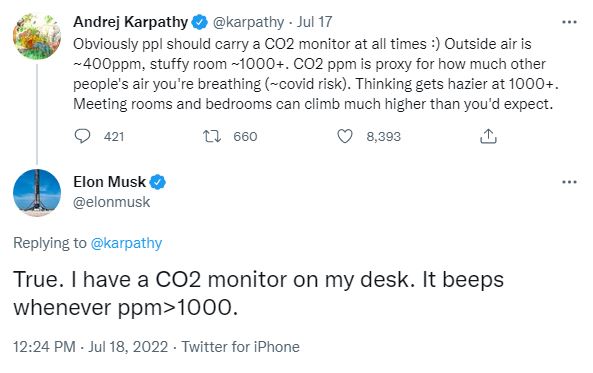Less Coffee, More Fresh Air!
Less Coffee, More Fresh Air!
At some point in most peoples’ lives, fatigue is a fact of daily life. We can chalk it up to too much work and not enough sleep, or poor quality sleep, or a virus that seems to be “going around”. But what if it could be as simple as not enough fresh air? Simple…yet sometimes not easy to fix, when opening the windows lets in more harmful air than good. Let’s dig into this “simple” cause…
Different regulations regarding ventilation have been around for a long time, way longer than the American Society for Heating, Refrigerating and Air-Conditioning Engineers (ASHRAE) published its first Standard 62 for ventilation. The first, ANSI/ASHRAE Standard 62-1973, Standards for Natural and Mechanical Ventilation, presented minimum and recommended ventilation rates for 266 applications and became the basis for most state codes.(ASHRAE.org)
This standard has been revised several times since 1973, and the current standard calls for homes to “receive 0.35 air changes per hour but not less than 15 cubic feet of air per minute (cfm) per person.” (epa.gov) Why? According to Britannica.com, Clean, dry air consists primarily of nitrogen and oxygen—78 percent and 21 percent respectively, by volume. Without any other contaminants such as carbon monoxide (from combustion) or radon (from the earth) entering a building, humans change the composition because we take in oxygen and breathe out carbon dioxide. Our lungs can still rebreathe this air “safely” until it decreases below 19.5% (OSHA threshold for oxygen in atmosphere), but increaseing levels of carbon dioxide (CO2) may cause occupants to grow drowsy, get headaches, or function at lower activity levels. (healthybuildingscience.com) What’s the threshold of CO2?
NIOSH (National Institute for Occupational Safety and Health): 1,000 ppm (parts per million in air) are a marker suggesting inadequate ventilation.
ASHRAE recommends that carbon dioxide levels not exceed 700 ppm above outdoor ambient levels. (Normal range for outdoor levels are typically in the 350-450 ppm range).
OSHA (the Occupational Safety and Health Administration) limits carbon dioxide concentration in the workplace to 5,000 ppm for prolonged periods, and 35,000 ppm for 15 minutes.
Taking the most conservative route, 1000 ppm is only 0.1%. Wow, it doesn’t take a lot of CO2 to make stale air! If this is the gold standard, why are we suffering in stale air? The answer is that many places in the US do not require building permits in order to build or renovate a home. For this reason, it’s up to the homeowner to know what is needed and make sure it’s installed. If the HVAC technician does not design fresh air into the system, and the homeowner does not know about the need for it, the home won’t have it and the air will be stale. Case in point: my 1982 home in the country. It cools, heats, and circulates stale air.
Take this tweet from Andrej Karpathy and Elon Musk, who know a bit about technology:
And then the public chimed in: a Stanford professor used to take CO2 measurements in a lecture hall before packing 100+ students in for 1.5 hours, because some halls did not have enough ventilation to sustain deep thought! Then a restaurant worker began to think, oh, so that’s maybe why I got dizzy sometimes during peak hours of a restaurant? And another: his son used to wake up crying but since increasing ventilation in his room, the child sleeps a lot more peacefully.
So if you want to measure your air, lethargy, unclear thinking and headaches don’t have to be part of your day! There are lots of CO2 monitors on the market, with most starting about $65-70. This monitor by INKBIRDPLUS shows temperature, humidity and CO2, and also allows you to customize an alarm for different levels of CO2 (they recommend normal (400-700 ppm), warning (700-1500 ppm), and dangerous (1500-5000 ppm)).
Can you imagine measuring the CO2 while sitting in a conference room or in a lecture hall? With such technology at your fingertips, there’s no reason to be ashamed to say “I need a break”. Your brain and body will thank you!
Photo by Call Me Fred on Unsplash


